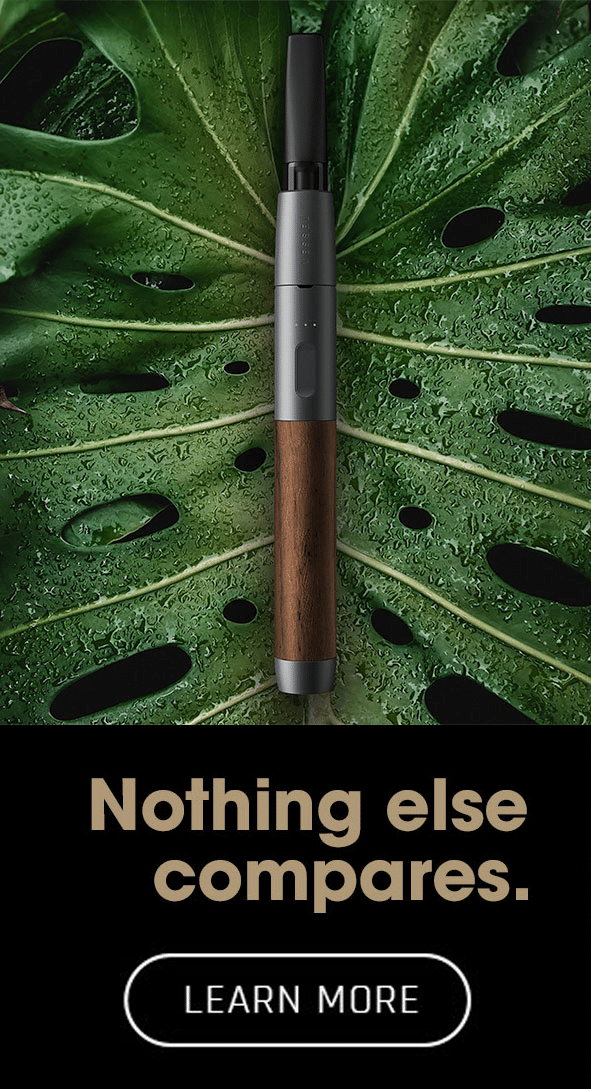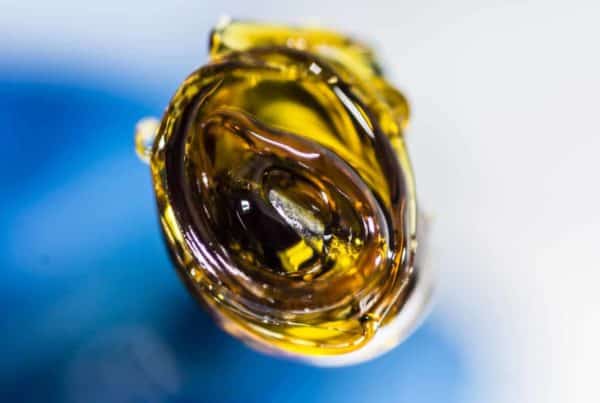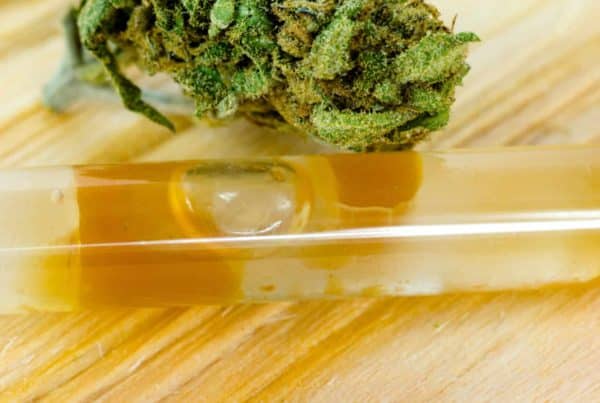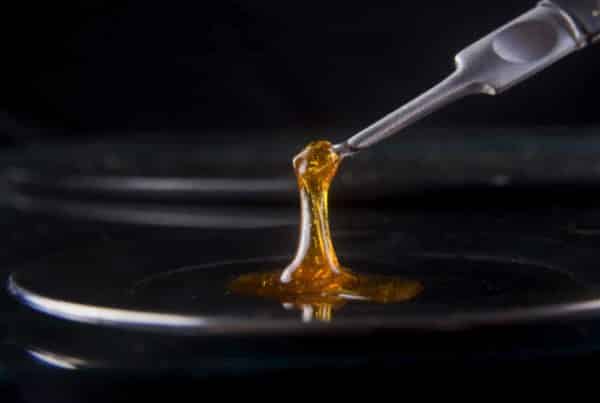By now, most people are familiar with dabbing and vaping cannabis concentrates, but do you actually know what you are consuming? This article will answer the basic question of “What is Rosin?”.
Concentrates are produced in many different ways, and the method of production determines the quality and purity of the product.
Rosin, a type of cannabis concentrate, is free of any foreign chemicals and has quickly become a crowd favorite.
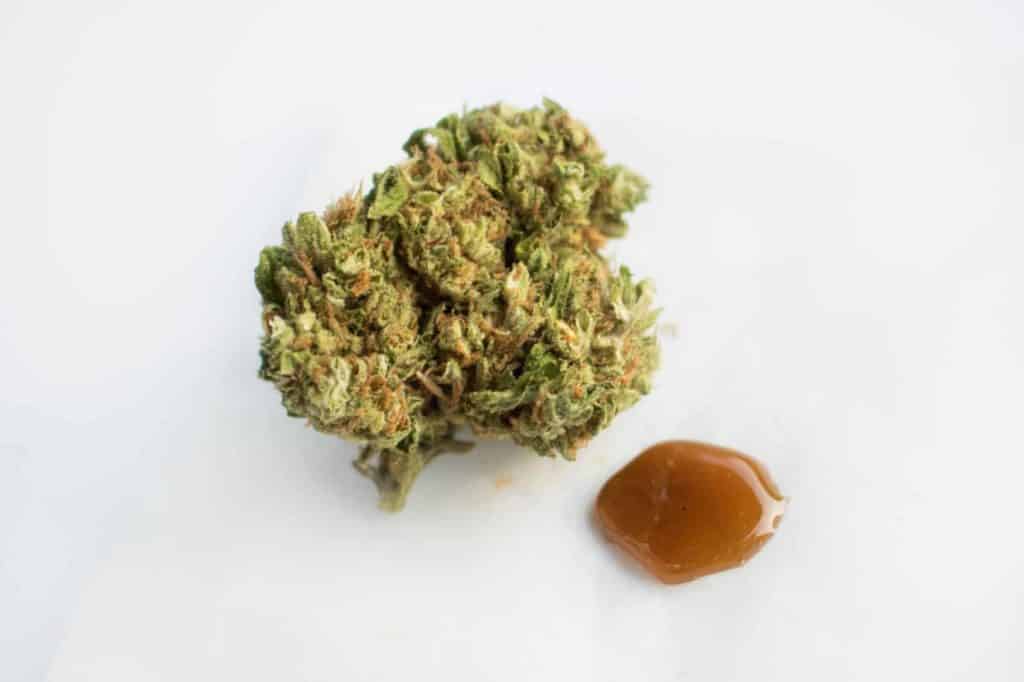
What is Rosin?
In short, it is a cannabis concentrate extracted from the plant using heat and pressure.
In other words, the term refers to solvent-less concentrated cannabis oil.
People use vapes and oil rigs to vaporize and inhale rosin for medical and recreational purposes.
Generally, ~70-80% cannabinoids (THC, CBD, etc.), and ~0.5-15% terpenes make up its composition. However, the chemical composition of rosin will vary.
For instance, the production method and starting material will affect the consistency, color, and chemical profile.
How is Rosin Made?
Wrapping cannabis material in parchment paper and compressing it with metal heated plates causes a sap-like concentrate to drip onto the parchment paper. This concentrate is known as rosin.
In more technical terms, the heat melts the cannabinoid- and terpene-rich oil found in cannabis trichomes. Simultaneously, the pressure ruptures the membrane of the trichomes while also forcing the liquid oils within the trichomes to separate from the plant tissues, waxes, and lipids.
For instance, heating and compressing cannabis trim, hashish, or kief will produce rosin.
To better understand, what is rosin? You can watch this 5-minute video for a visual representation.
Enclosing the cannabis contents in a mesh or nylon screen is a common practice in rosin extraction. That way, you prevent the unwanted plant matter from making its way into the rosin.
In terms of tools, a heated machine press is commonly used for the large-scale extraction of rosin, but you can also make it at home with a hair straightener and parchment paper (see below for details).
Advanced machinery, like the Helix 3 Ton Manual Rosin Press, allows you to regulate the temperature and pressure, and as a result, you can selectively extract cannabis compounds.
For instance, you can re-press rosin at low pressure and low temperature to isolate cannabinoids from the terpenes.

Why is Rosin Popular?
It has become popular because the product is pure and the extraction method is cost-effective and straightforward.
Consumers get to enjoy a quality concentrate free of any foreign substance and producers benefit from the high-profit margins. To put it differently, it is currently a win-win situation for consumers and producers.
Also, rosin generally has a high concentration of terpenes, a large and structurally diverse family of natural products, many of which have medical importance.
A high terpene concentration is beneficial both in terms of a therapeutic and economic standpoint.
Read below for further details.
A Highly Pure Concentrate
First and foremost, people like rosin because it is pure of any foreign substance. There is no risk of solvent contamination.
People enjoy concentrates that resemble the natural plant. They prefer not to inhale or ingest residual solvents and non-cannabis chemicals that may alter the flavor or have adverse health effects.
There is a similar trend towards natural products in markets such as food, health, cosmetics, and pharmaceuticals, amongst others.
As more people become health conscious, there is a growing customer base for solvent-less concentrates.
Extracting Rosin is Simple, Safe, and Quick.
Secondly, since the extraction method is straightforward and relatively safe, you do not need a technical or science background to do it, unlike solvent-based extractions.
In fact, you can make it at home in roughly 15 minutes with everyday household items. To make rosin, you only need a hair straightener, parchment paper, scraping tool, and cannabis material.
How to Make Rosin at Home with Everyday Objects:
- Step 1: Place the cannabis flower, hashish, or kief between two sheets of parchment paper. Use a piece of parchment paper that is larger than your contents so you can catch the rosin.
- Step 2: Use a hot hair straightener to compress the cannabis material wrapped in parchment paper for about 20-60 seconds. Squeeze the material with as much pressure as possible.
- Step 3: Use the scrapping tool to remove rosin from the parchment paper.
- Step 4: Store rosin in an appropriate container and conditions. For short term storage, use a silicon container and store at room temperature (68 to 72 °F). For long term storage, wrap it in parchment paper and place it in an airtight container at low temperatures (a fridge or freezer will work).
In regards to safety, using heat and pressure is a lot safer than using volatile and flammable solvents for cannabis extractions. Generally, solvent-based extractions use liquid gas (propane, butane, etc.) as the solvent, and this can lead to dangerous explosions if not done properly.
Another advantage of this method is that rosin is clean and ready to use in minutes. On the other hand, solvent-based concentrates require a lengthy purging step that often does not remove all of the solvents.
To demonstrate this point, in 2015, researchers found residual solvents in more than 80% of solvent-based cannabis concentrates in California.
The most commonly found solvent was isopentane, an extremely volatile and flammable liquid. This hydrocarbon solvent is toxic and considered as an aspiration (breathing) hazard.
By choosing rosin over solvent-based extracts, you have no risk of consuming residual solvents.
Making rosin is not expensive, and the product can be sold at a high price.
The equipment often costs less than other extraction methods, and you don’t have to spend money on buying solvents or employing experienced technicians to run lengthy solvent-based extractions.
The high-profit margins and growing market is persuading many entrepreneurs to produce rosin. In 2018, ArcView projected that concentrate annual retail sales will reach $8 billion in 2022. Solvent-free concentrates, like rosin, will surelydominate the market.
High Terpene Content
Lastly, compressing cannabis material at low temperatures preserve the terpenes, and the rosin will contain a high concentration.
On the contrary, solvent-based extraction methods often remove most of the terpene content in the concentrate.
A high terpene concentration comes with many benefits.
For starters, terpenes add flavor and aroma to cannabis concentrates. Customers report a more pleasant experience when inhaling vaporized rosin in comparison to solvent-based concentrates that often have low terpene content.
Moreover, the terpenes found in cannabis display a range of therapeutic properties. For thousands of years, people have used many of these terpenes in aromatherapy.
A high terpene concentration also results in low viscosity, and as a result, high terpene rosin will have the right consistency for most vapes.
Thus, you can vape high terpene rosin without adding any thinning agents.
High Terpene Rosin Requires No Addition Of Thinning Agents.
Therefore, you are vaping only the cannabis product and no foreign substances.
On the other hand, due to low terpene content in solvent-based concentrates, the viscosity is high, and the consistency is not compatible with most vapes.
The standard industry practice is to add thinning agents to solvent-based concentrates to lower the viscosity. For example, the most commonly used thinning agents are propylene glycol (PG), polyethylene glycol (PEG), vegetable glycerin (VG), or medium-chain triglycerides (MCT).
The problem is that many of these thinning agents when heated convert into harmful chemicals. In particular, heating propylene glycol (PG) and polyethylene glycol (PG) to vaping temperatures produces high levels of cancer-causing chemicals.
Another practice to lower the viscosity of solvent-based concentrates is to mix in artificial terpenes. The added terpenes can be non-cannabis terpenes, and thus will alter the experience of the natural strain.
On a related note, the market share for pre-filled vape cartridges has risen rapidly in recent years.
Consumers seem to prefer the user- and beginner-friendly pre-filled vape cartridges. For example, pre-filled vape cartridges accounted for over half of the sales in the legal concentrate market in 2017.
Therefore, rosin has the opportunity for tremendous market growth in the cannabis industry. High terpene rosin vape cartridges are an attractive product because they are deemed natural, safe, and discreet.
Concluding Remarks
All in all, the ease of production, purity of the concentrate, and high-profit margins make rosin a top choice for consumers and producers.
People are beginning to prefer solvent-less concentrates over solvent-based concentrates, and the rosin market share will continue to grow.
For more information about, what is rosin? Please feel free to contact a Quantum 9 cannabis consultant. We would be happy to answer any questions you may have.




